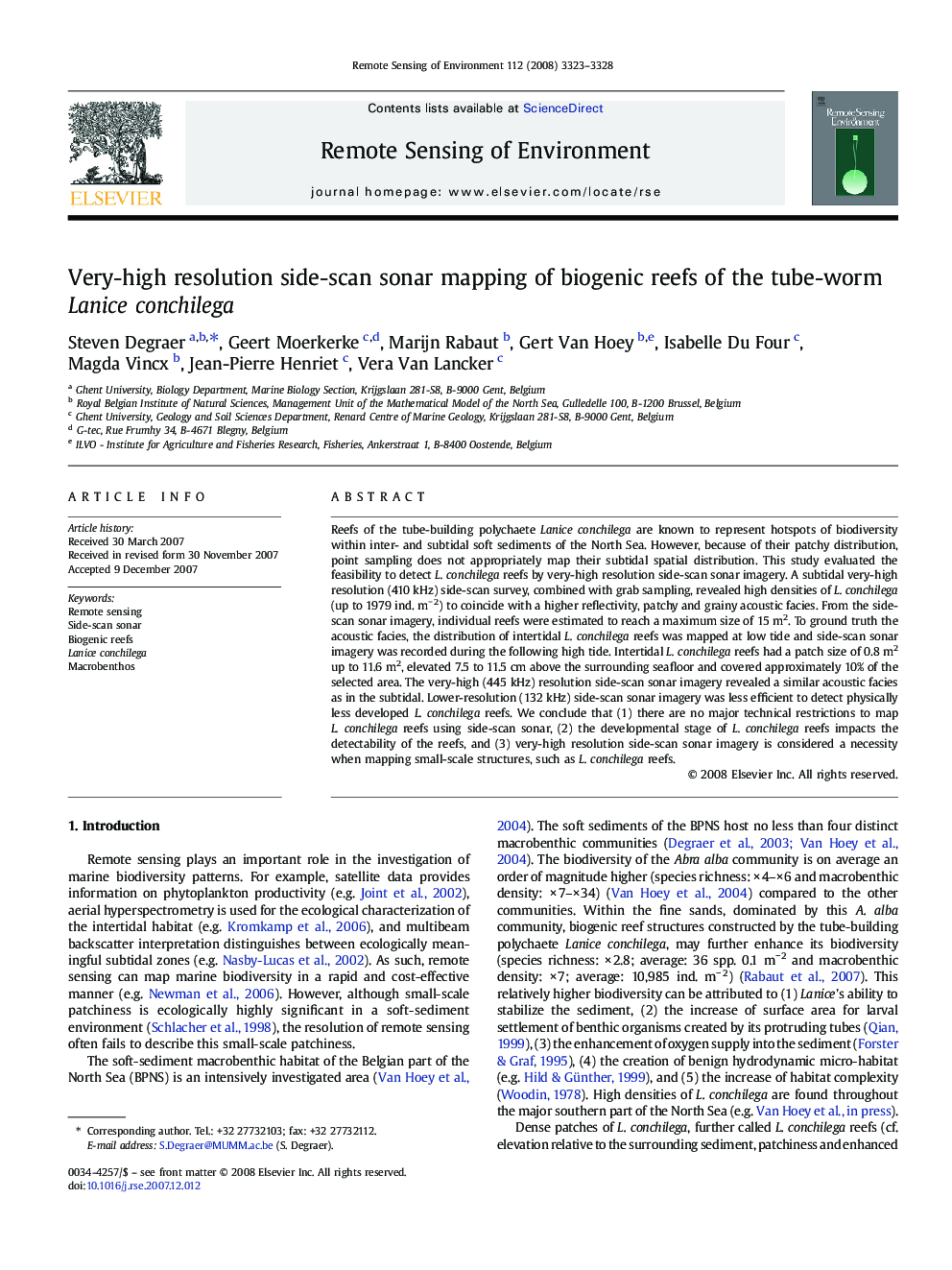| Article ID | Journal | Published Year | Pages | File Type |
|---|---|---|---|---|
| 4460058 | Remote Sensing of Environment | 2008 | 6 Pages |
Reefs of the tube-building polychaete Lanice conchilega are known to represent hotspots of biodiversity within inter- and subtidal soft sediments of the North Sea. However, because of their patchy distribution, point sampling does not appropriately map their subtidal spatial distribution. This study evaluated the feasibility to detect L. conchilega reefs by very-high resolution side-scan sonar imagery. A subtidal very-high resolution (410 kHz) side-scan survey, combined with grab sampling, revealed high densities of L. conchilega (up to 1979 ind. m− 2) to coincide with a higher reflectivity, patchy and grainy acoustic facies. From the side-scan sonar imagery, individual reefs were estimated to reach a maximum size of 15 m2. To ground truth the acoustic facies, the distribution of intertidal L. conchilega reefs was mapped at low tide and side-scan sonar imagery was recorded during the following high tide. Intertidal L. conchilega reefs had a patch size of 0.8 m2 up to 11.6 m2, elevated 7.5 to 11.5 cm above the surrounding seafloor and covered approximately 10% of the selected area. The very-high (445 kHz) resolution side-scan sonar imagery revealed a similar acoustic facies as in the subtidal. Lower-resolution (132 kHz) side-scan sonar imagery was less efficient to detect physically less developed L. conchilega reefs. We conclude that (1) there are no major technical restrictions to map L. conchilega reefs using side-scan sonar, (2) the developmental stage of L. conchilega reefs impacts the detectability of the reefs, and (3) very-high resolution side-scan sonar imagery is considered a necessity when mapping small-scale structures, such as L. conchilega reefs.
